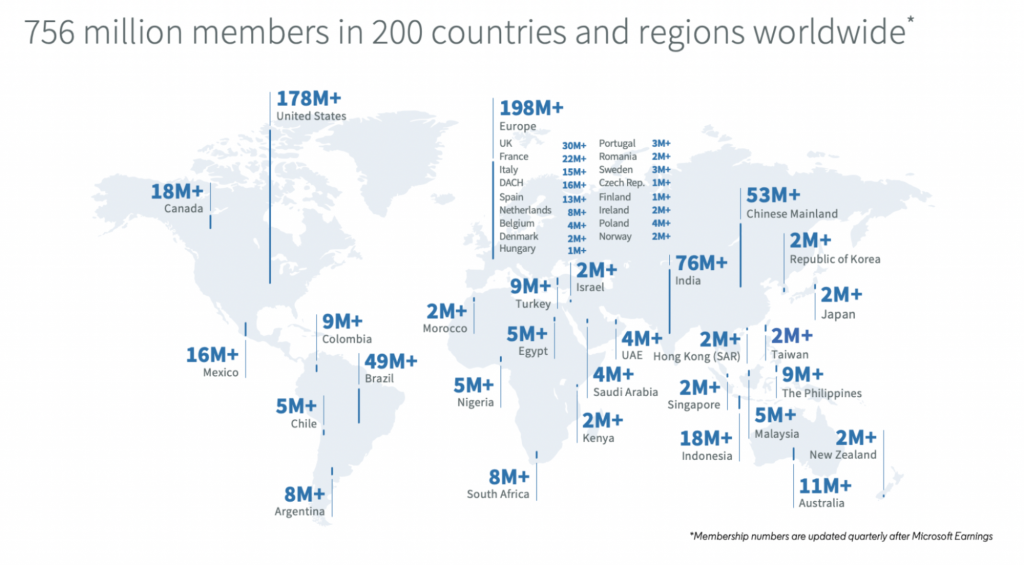5 Ways to Get More Clients as a Freelancer in 2021
Being a freelancer is fantastic and there are multiple perks. You get to set your own hours and work wherever you want. However, if there’s one downside it’s that you have to source all your clients yourself. And as any business will tell you, without clients – there’s no business.
Because there are now more freelancers than ever before, getting more clients has become more challenging. You perhaps have to think outside the box a bit more and get creative.
In this article, we’re going to take a look at 5 ways to get more clients as a freelancer in 2021. These tactics can be implemented by anyone regardless of what type of freelancer you are.
1. Leverage LinkedIn to the Fullest
There are, of course, multiple “lead generation” channels a freelancer can leverage in 2021, including Facebook and email.
But if there’s one that truly stands out among the rest at the moment, it’s LinkedIn.
LinkedIn is a networking hub where recruiters and job seekers alike can connect. For freelancers, it’s a veritable treasure trove where you can find businesses that are looking to hire remote freelancers just like you.
LinkedIn is used by 756 million people, with stats showing that there are at least 15 million open jobs on LinkedIn Jobs.

Complementing these figures is the fact that almost 50% of businesses now employ at least one freelancer. This means that, if there are recruiters on LinkedIn looking for new personnel in your niche, there’s every chance they’ll hire a freelancer.
So how can you leverage LinkedIn to get more clients as a freelancer? Here are some tips:
i. Use the Right Keywords
Just like Google, being seen on LinkedIn requires you to work on your SEO.
In other words, it’s the profiles that offer the most value and which have done all the right things when it comes to SEO that end up at the top of the search results.
This means (among other things) that you need to use the right keywords that will allow your profile to pop up in the right search results.
For example, if a recruiter is looking for a freelance videographer in Manhattan, they will likely use the keyword “freelance videographer in Manhattan” in their search. Unless you’ve optimized your profile to include this keyword, you simply won’t show up in the search results.
As a freelancer, it’s really important that you add the word “freelancer” to your profile. This will help you appear in more relevant search results, but it will also show anyone who accidentally stumbles across your profile and who is in need of a freelancer that you might be the candidate they’re looking for.
As well as optimizing your profile, LinkedIn hashtags are handy for optimizing your updates on LinkedIn. Use niche-oriented hashtags to make your content stand out to potential new clients.
ii. Sum Up What You Do
Once a recruiter lands on your profile, the last thing they want is to be besieged by a huge, wordy profile that doesn’t really tell them anything. Instead, it’s a much smarter idea to succinctly sum up what it is that you do in one or two lines.
Outline your services, as well as what you can do for your next client (without being too salesy), and employ bullets to break up the text.
iii. Upload a Smart, Professional Headshot
Profile pictures go a long way on LinkedIn. As a freelancer, it’s essential that you add one which is professional but which manages to convey what your brand is all about.
iv. Stay Active on Your Account
Recruiters might shy away from approaching you if your profile looks inactive. To ensure more invitations to job interviews, be active. This means leaving comments on other posts, regularly updating your profile with your latest jobs, and even posting articles and news updates about your niche and business.
2. Tighten Up Your Client Outreach
Client outreach should form an integral part of your client-getting strategy because, sometimes, clients won’t know about you unless you make the initial approach.
And sometimes, they won’t be ready to work with you until you contact them again – and again.
In other words, client outreach requires you to be bold and persistent.
It also requires you to be dedicated and committed to taking action.
For client outreach to be effective, you first need to identify potential leads. You can find leads on LinkedIn, as well as on Google and even Facebook.
Then, you could create a schedule for when you’ll perform client outreach each week (otherwise it may never get done). You’ll need to come up with a good client outreach email template (which should be tweaked according to open and response rates), before sending emails and follow-up emails on specific days, and at specific times each week.
What should an outreach email look like?
There’s no magic bullet but here are some general rules of thumb:
- Keep it short and get straight to the point
- Let the client know what you can do for them
- Address their pain points (but don’t dwell on them too much)
- Give them advice – solve one of their pain points now (demonstrate your expertise)
- Personalize each email
Your social channels are a vital outreach tool also. LinkedIn goes without saying, but again, even Facebook can be used for outreach in some circumstances.
One key rule of all outreach whether it is via email or via social media is to respond to your potential leads quickly; ‘strike while the iron is hot’ as the saying goes. Social media engagement tools allow you to respond rapidly but without having to constantly check on all your different profiles.
3. Use Testimonials
It’s one thing if you as a freelancer say how good you are and what you can do for clients. But it’s much more advantageous if other people say it for you.
This is where client testimonials come in. Client testimonials help to build trust and confidence in your brand simply because they’re coming from outside sources other than yourself.
Remember, it’s difficult for any of us to trust something that’s new. But it’s much easier to trust it if someone else has already used it before, and heaped praise on it.
How can you use client testimonials?
You can add them to your website’s landing page/homepage, as well as your social profiles (especially LinkedIn).

If you don’t have any testimonials at the moment and you’re not sure how to get some, the easiest way is simply to approach past, satisfied clients, and politely ask them if they’ll write you a testimonial.
4. Create & Share Valuable Content
What does it mean to create and offer value as a freelancer?
It means creating educational resources that help your clients solve problems before they’ve hired you.
For example, conversion copywriter Joanne Wiebe runs a class every Tuesday called Tutorial Tuesdays, in which she teaches copywriting to potential clients. She’s giving out free information and teaching them a new skill that they can use in the future. Or, if they decide that she’s simply better than them, or that they don’t have the time, they might hire her to do their copywriting for them.

The idea is that you solve some of your client’s problems, but not all of them. By providing them with free, valuable content, you’re building trust and building relationships whilst demonstrating your expertise… but you’re also omitting crucial “secrets” that will encourage the client to perhaps hire you to complete jobs for them.
Creating and offering value in this way also spreads goodwill and it helps to grow your brand and online presence. You can:
- Write blog posts
- Host virtual events
- Host webinars
- Create online courses
It’s really important that, whenever you do create valuable content like this, you add a call to action somewhere in the middle and at the end. This is how you let any potential clients know that you’re available for work.
5. Join a Freelance Marketplace
While some freelancers might tell you that joining a freelance marketplace is a race to the bottom, these marketplaces are still one of the best ways to get more clients as a freelancer in 2021. This is because they were created specifically to connect freelancers with businesses, and many of them are used by thousands (and sometimes millions) of clients.
There are lots of options available, too, with each marketplace serving different types of clients and freelancers.
- Upwork – Perhaps the most popular of all freelancer marketplaces, Upwork is currently used by a variety of companies. Budgets typically range from very small to high, and there are short and long term projects available. Both complete newbies and seasoned professionals alike are encouraged to sign up
- Toptal – Toptal is strictly aimed at experienced professionals who have been working in their niche for a number of years, either as a freelancer or a full-time employee. They have a screening process in place that aims to weed out unsuitable candidates, while clients include the likes of Airbnb
- Freelancer – Freelancer is similar to Upwork in terms of its user base and flexibility. Newbies and pros can sign up, there are millions of jobs available, but where the two sites differ is that Freelancer lets you compete against other freelancers in order to land jobs
Wrapping up
Getting clients as a freelancer can take up a good amount of your time, which is why it’s also important that you put systems in place. Use the tips in this article but then start about creating a schedule and routine that ensures securing new clients doesn’t start to dominate your working life.
Always remember also to not take on more work than you can manage, and to work at nurturing relationships with existing clients so that you’re not constantly looking for new ones.
